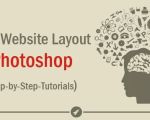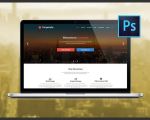- 1-Emerging-Visual-Trends-for-2025
- 2-Immersive-Experiences-with-AR-and-VR
- 3-Minimalism-Meets-Bold-Typography
- 4-Sustainable-and-Ethical-Design-Practices
- 5-AI-Driven-Personalization
- 6-Case-Studies-Showcasing-2025-Trends
1. Emerging Visual Trends for 2025
As we approach 2025, website design continues to evolve with a strong emphasis on dynamic visuals and engaging aesthetics. Designers are increasingly adopting layered animations, vibrant gradients, and micro-interactions that add depth and personality to websites. These elements create memorable first impressions and encourage visitors to explore further.
For example, a popular digital agency recently implemented subtle motion graphics on their landing page, resulting in a 35% increase in user engagement. Such visual trends highlight the balance between creativity and usability that will dominate 2025.
2. Immersive Experiences with AR and VR
Augmented reality (AR) and virtual reality (VR) technologies are becoming integral to modern web experiences. Brands in retail, real estate, and education use AR/VR to offer immersive product demos, virtual tours, and interactive learning environments, enhancing user engagement and decision-making.
A furniture retailer incorporated AR features allowing users to visualize products in their homes via mobile devices. This innovation led to a notable boost in conversion rates, illustrating the powerful role immersive technologies play in 2025’s web design landscape.
3. Minimalism Meets Bold Typography
Minimalist design remains a cornerstone, but in 2025, it’s paired with bold, oversized typography that captures attention instantly. This contrast emphasizes key messages without overwhelming visitors, supporting faster comprehension and stronger brand identity.
A startup showcased how bold fonts combined with ample white space improved readability and brand recall, contributing to higher user retention and satisfaction. The strategic use of typography is shaping user journeys and accessibility standards this year.
4. Sustainable and Ethical Design Practices
Eco-conscious design principles are gaining momentum. Websites designed for energy efficiency, faster load times, and reduced data consumption reflect a commitment to sustainability. Ethical design also includes inclusivity, ensuring accessibility for diverse user groups.
One tech company adopted a “green web” approach by optimizing images and code, significantly lowering their carbon footprint while improving site speed. This trend not only benefits the planet but also enhances user experience and brand trust.
5. AI-Driven Personalization
Artificial intelligence is powering personalized website experiences like never before. Adaptive layouts, content recommendations, and chatbots tailor interactions based on visitor behavior, increasing relevance and engagement.
An e-commerce platform used AI to customize product suggestions and streamline checkout processes, resulting in a 28% rise in sales. AI-driven personalization is becoming a must-have feature to meet growing consumer expectations.
6. Case Studies Showcasing 2025 Trends
Real-world examples illustrate the impact of these design trends. A global fashion brand’s website relaunch combined bold typography with AR try-on features, driving a 50% increase in online sales within months. Another example is an educational platform that embraced minimalism and AI-powered tutoring chatbots, significantly improving student engagement and retention.
Platforms like SitePoint 24 offer curated services and expert guidance to help businesses integrate these innovative trends effectively, ensuring their websites remain competitive and future-ready.








